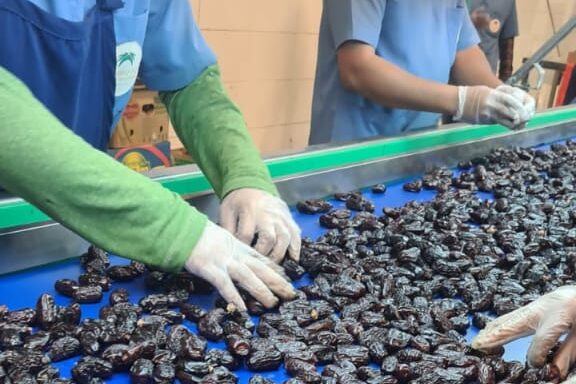From Seed to Sweet: The Journey of Growing Dates on Our Farm
Dates are delicious fruits that have been cultivated for thousands of years. They grow on date palm trees, which can reach up to 75 feet (23 m) tall. On our farm, we have several varieties of date palms, each with its own characteristics and flavor. In this blog post, we will share with you how we grow and harvest dates, from cutting the thorns to exporting them.
Cutting the Thorns
The first step in growing dates is to cut the thorns from the date palm trees. These thorns are sharp and can cause injuries to us and the dates. We use a long pole with a saw blade attached to it to reach the thorns and cut them off. We do this every year before the flowering season, which is usually in spring.
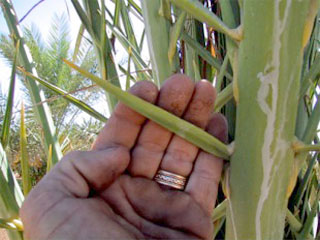
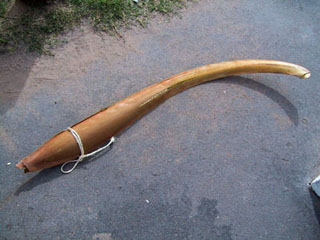
Cutting Sheaths
The next step is to cut the sheaths that cover the flower stalks. These sheaths are green and protect the flowers from pests and diseases. However, they also prevent pollination and fruit development. Therefore, we cut them open with a knife or scissors to expose the flowers. We do this when the flowers start to emerge, which is usually in late spring or early summer.
Pollinating the Flowers
Date palms are dioecious, meaning they have separate male and female trees. Only the female trees produce fruits, but they need pollen from the male trees to do so. Since the natural pollination by wind or insects is not very efficient, we manually pollinate the flowers. We do this by collecting pollen from the male flowers and sprinkling it over the female flowers. We use a small brush or a feather to do this. We do this as soon as we see the female flowers open, which is usually in summer.
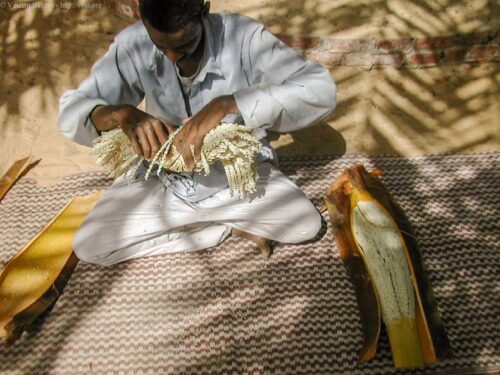

Optimizing Size of Dates
After pollination, the female flowers develop into clusters of dates called strands. Each strand can have hundreds of dates, but not all of them will grow to full size and quality. To optimize the size and quality of the dates, we thin out some of them from each strand. We do this by hand, removing about half of the dates from each strand. We do this when the dates are still green and small, which is usually in late summer or early fall.
Demonstrating New Ripening of Dates
Dates ripen in different stages, depending on their variety and climate. Some dates ripen on the tree, while others ripen off the tree. On our farm, we produce Ajwa, Safawi, Sukkari, Mabroom and Ambar. These dates ripen on trees and do not require to be harvested
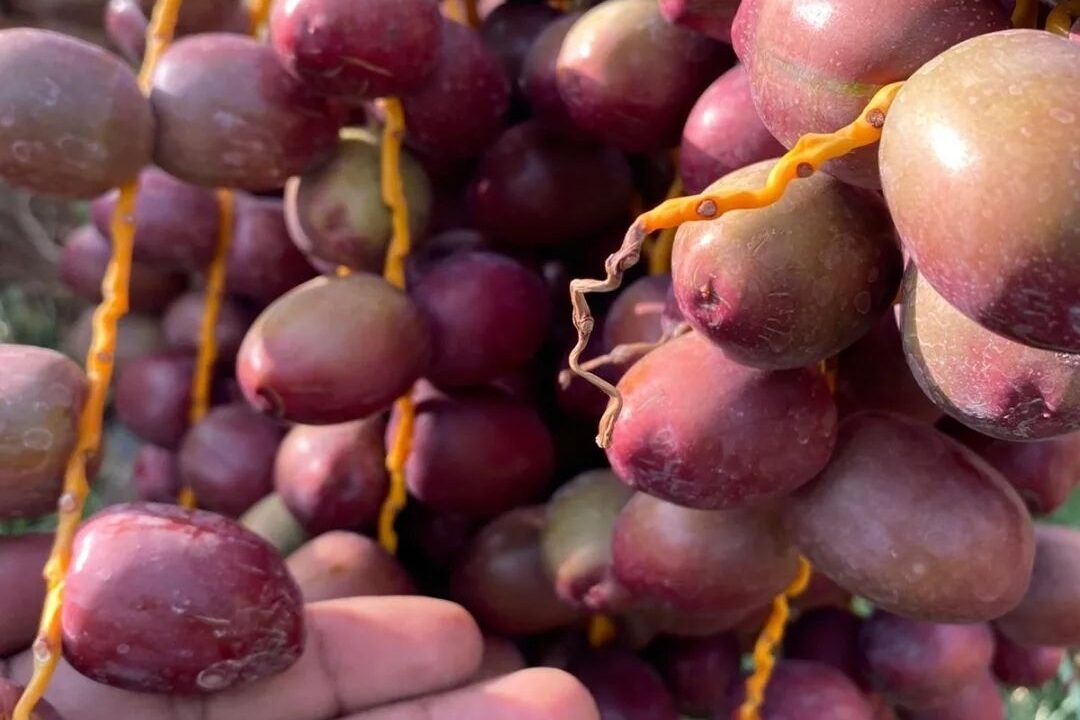
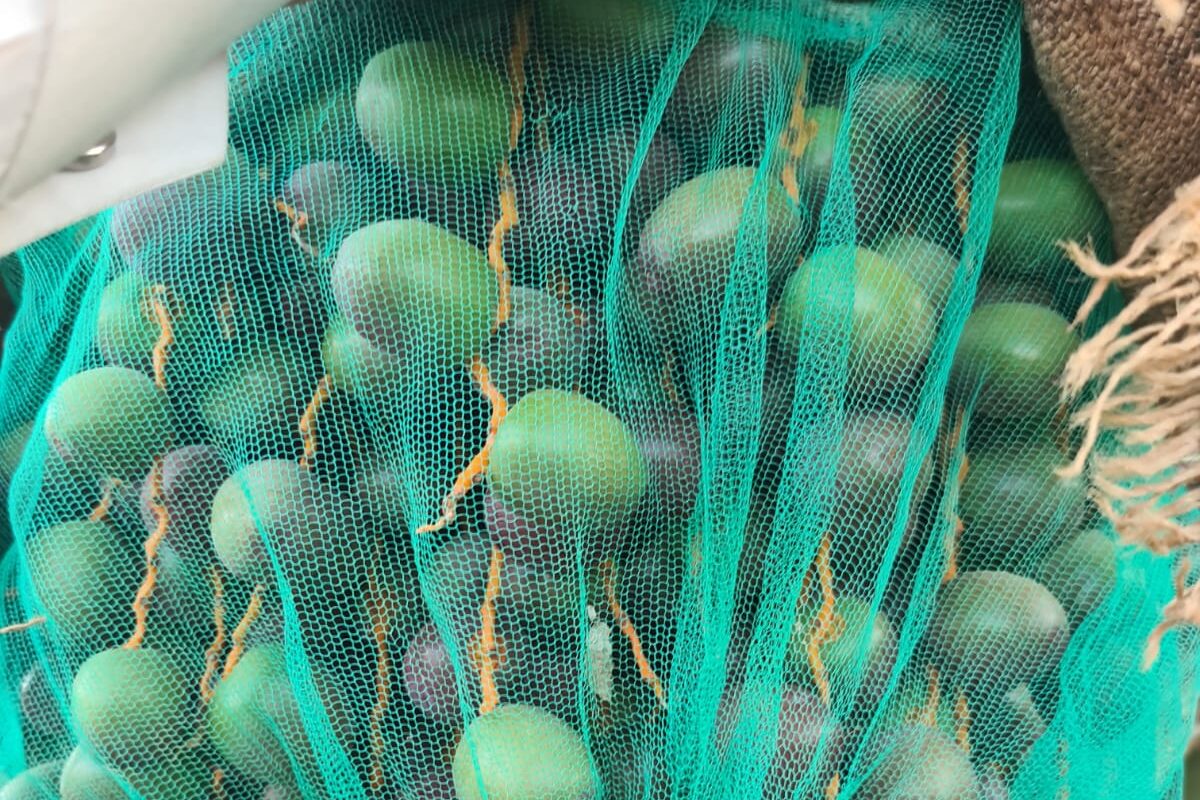
Covering Dates with Bags to Protect Them from Birds
As the dates ripen, they become more attractive to birds, who can damage or eat them. To protect them from birds, we cover them with netted bags that allow air circulation but prevent bird access. We do this when the dates start to change color, which is usually in fall.
Transplanting Date Pups
Date palms can propagate by seeds or by offshoots called pups. Pups are young plants that grow from the base of the parent palm. They can be separated and transplanted to grow new palms. We do this when the pups are about 3-4 feet (0.9-1.2 m) tall, which is usually in winter or early spring.
To transplant date pups, we dig around them carefully to expose their roots. We then cut them off from the parent palm with a sharp knife or saw. We make sure to leave some roots attached to each pup. We then plant them in a new location with well-drained soil and full sun exposure. We water them regularly until they establish themselves.
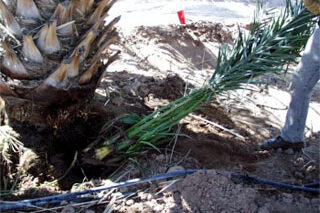
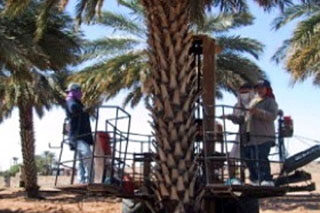
Harvesting Dates
The next step is to harvest the dates when they are ripe and ready to eat or store. Depending on their variety and climate, dates can be harvested from late summer to early winter. To harvest them, we climb up the tree using a ladder or a harness. We then pull gently on each date to detach it from its stem. We collect them in baskets or buckets and bring them down to the ground.
Sorting of Dates:
In this process we separate dates based on their size, shape, color and quality. At Jfd Dates, sorting is carried out manually to ensure that the highest quality of final product is achieved. Sorting also helps to remove any damaged, diseased, or insect-infested dates. Sorting helps to ensure a uniform and attractive product that meets the customer’s expectations.
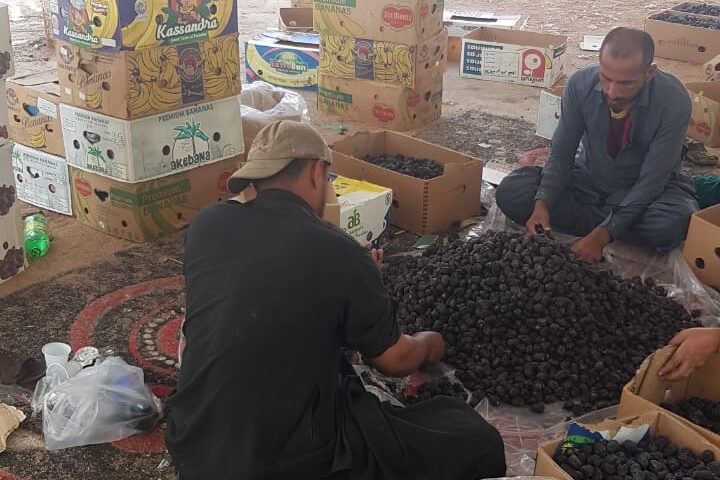
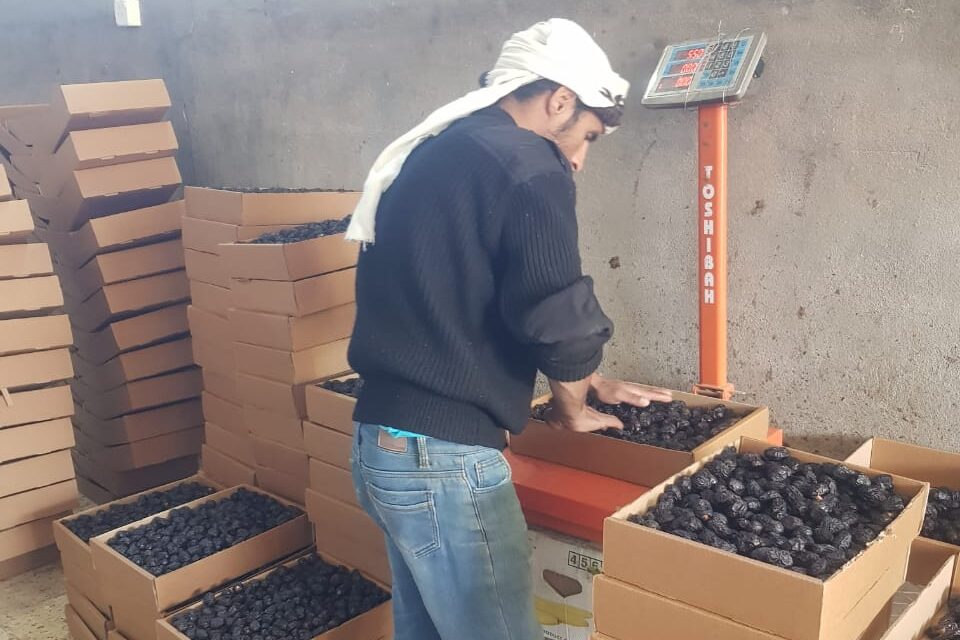
Grades Distribution:
Grades distribution is the process of assigning different grades to dates based on their quality and characteristics. We distribute dates in 3 grades based on their size and quality. These are Standard, Premium & Exclusive. This grading process helps to determine price and value of dates for trading .
Fumigation:
Once the grade distribution process is completed, the dates are shifted to a large container containing Phosphine (PH3) gas which acts as a fumigant. The purpose of fumigation is to kill any insects, larvae, or eggs that may be present in the dates. Fumigation helps to prevent infestation and spoilage of the dates during storage and transportation. Dates are kept in this fumigation chamber for 72 hours before shifting them to cold storage
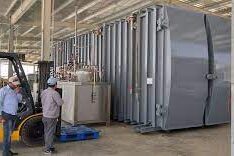
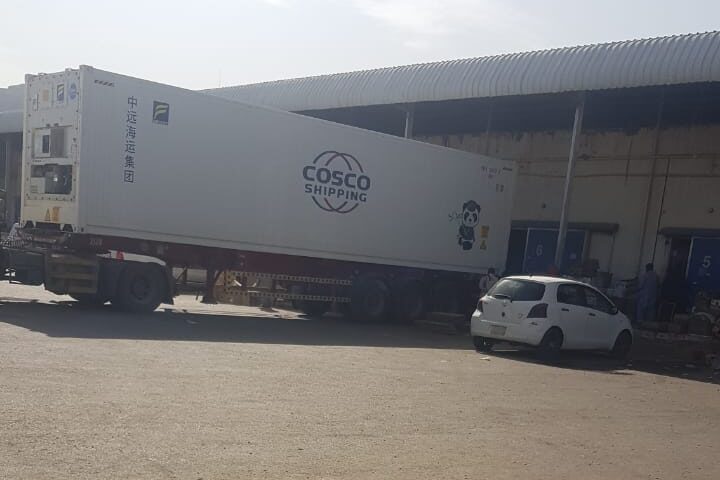
Transferring Dates to Cold Storage
Dates are transferred to cold storage in this step. The temperature is maintained at -18 C (0 F) for the first 3 days to kill any eggs that might still remain in the stock. After 3 days the temperature is raised to 0 C (32 F). The dates are kept in cold storage until we are ready to sell or export them.
Cleaning Dates and Exporting Them
Before we sell or export the dates, we clean them and remove any dirt, dust, or insects. We do this by washing them gently with water and drying them with a cloth or a fan. We then pack them in boxes or bags, labeled with their variety, weight, and origin. We ship them to local or international markets, where they are sold as fresh or dried fruits
